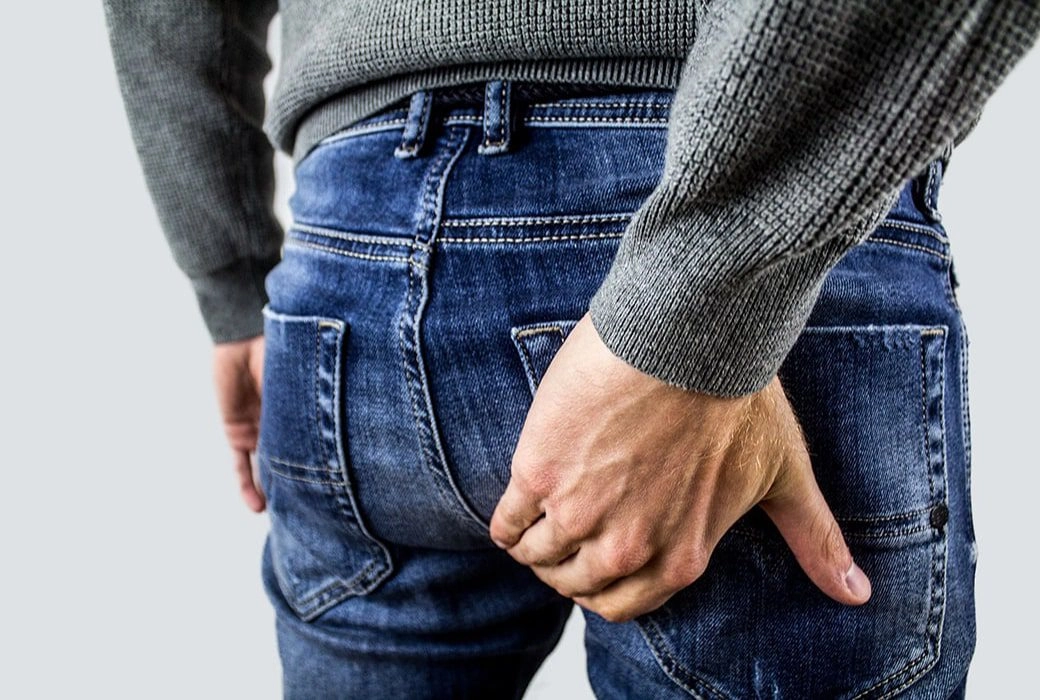Sciatica is one of the most common and painful issues that people face. The shooting or radiant pain from the lower back and down the leg can make walking a difficult task. Many articles tell you what you can do for sciatica, but if you do the wrong things, your sciatica will never get better. Fortunately, your Anchorage chiropractor can help.
A common question among sciatica sufferers is, “Why is my sciatica not going away?” And the answer usually involves something that you wouldn’t think would cause sciatica to flare up. That’s why we want to tell you all about the worst things you can do if you have sciatica.
- Poor Posture
- Weight Gain
- Improper Stretching
- Lifting Heavy Things
- Tight Pants
- The Wrong Shoes
Some are generally lifestyle tips, some will likely surprise you, and some are things you probably do every day without a second thought. So read on to discover what’s causing your sciatica pain to worsen. Knowing this can be just as effective for helping sciatica as knowing what is best to do for sciatica.
Anchorage Chiropractor Explains: What Causes Sciatic Nerve Pain?
The sciatic nerve is the largest in the body. It exits the spine through the pelvis and then travels down the leg to the foot. One sciatic nerve is on each side of the body, and either can become irritated. However, they both rarely become irritated at the same time.
The underlying cause of sciatica nerve pain varies. Most often, it’s a herniated disc in the spine that presses against the sciatic nerve, causing the pain. Even though this happens in the lower back, you may only feel pain down the buttocks and leg. Other causes of sciatic nerve pain include:
- Spinal stenosis
- Bone spurs
- Degenerative disc disease
- Muscle inflammation and/or spasms
- Spondylolysis
What Makes Sciatica Worse? According to Your Anchorage Chiropractor
What makes sciatica worse depends mainly on its underlying cause. This is a herniated or bulging disc pressing against the nerve for most people. In these cases, anything that increases pressure on the spinal column’s discs will worsen sciatica.
This is where sciatica is tricky. You would think that sitting down would take the load off, but it puts more pressure on the spinal discs, worsening the pain. Something similar can be said for lying down. When the pain is at its peak, lying down for a short time can help, but doing so for too long will do the opposite.
Standing with a neutral spine and walking around can help relieve sciatic nerve pain and the overall healing process.
1. Poor Posture
The number one culprit for sciatica nerve pain is poor posture—especially the rounding of the lower back. Most often, this rounding occurs when we’re sitting down.
Among people with sciatica, the rounded lower back is often an adopted posture that they think will help with sciatica pain. Unfortunately, the opposite is true. Rounding or low back can make sciatica worse.
The spine has a natural S-curve for a reason. So the more you can maintain that natural curve of the spine, the better off you’ll be.
2. Weight Gain
Your Anchorage chiropractor will tell you, one of the big tips on many sciatica lists is weight loss. Of course, this is easier said than done. Many people who are experiencing sciatica pain have trouble exercising. Not only that, eating is a way many people deal with pain, anxiety, and depression. But weight gain and poor overall health can be terrible for sciatica.
The more weight you have on your body, the more pressure you put on your spine and, therefore, on your sciatic nerve in the case of a herniated disc. Overweight people also tend to experience more inflammation in the body, which can make sciatica even worse.
If you can’t lose weight while dealing with sciatica, the next best thing is not to gain anymore.
3. Improper Stretching
There’s something about sciatica that makes people want to stretch. Maybe they’re not exactly sure it’s sciatica, and they try some common stretches to see if it helps the pain. The problem is that there are good stretches for sciatica bad ones.
Stretches that have you bend your lower back (as opposed to hinging at the waist) can put more pressure on the discs in the lumbar spine, which can cause sciatica to flare up. If you’re going to stretch, avoid stretches that cause you to round your lower back, like hamstring stretches. Check with an experienced chiropractor in Anchorage, if you want a list of helpful stretches.
4. Lifting Heavy Things
In the same vein as specific stretches, lifting heavy things can worsen your sciatica pain, mainly if you lift improperly. Again, this has to do with the bowing or rounding of the lower back. Any time you take your back out of its natural S-curve, you’re putting undue pressure on the joints and discs of the spine. When you lift heavy things in this position, you’re compounding the problem.
If you can, avoid lifting anything heavy while dealing with sciatica. It’s good to stay active, but don’t go crazy at the gym and lay off the heavy lifting. If you must lift something, keep your back out of it and lift with your legs.
5. Tight Pants
Believe it or not, tight pants can contribute to sciatica pain. Whether it’s shorts, jeans, or skirts, avoid wearing overly tight, form-fitting pants until you’re sure the sciatica is gone. When you wear these bottoms, they can put undue pressure on the lower back, buttocks, and legs, inflaming the pain of sciatica.
6. The Wrong Shoes
Like tight pants, another part of your wardrobe could worsen your sciatica. The most likely culprits are high heels and shoes without adequate support.
The problem with high heels is they force weight distribution to the front of your feet. In order to compensate, it’s normal to push your pelvis and hips forward. When you spend enough time like this, it starts to put stress on your hamstrings, which is a surefire way to exacerbate your sciatica.
Similarly, shoes without adequate support can also put stress on the feet, which is then transferred up the leg to the hamstrings. This is why there is a wide range of shoe inserts designed especially for people with sciatica.
Signs of Sciatica Improving
There is no set length of time that sciatica takes to heal. If you avoid making it worse and take steps to help it heal, you may be back to normal within 2 weeks. For most people, however, it takes around 4 weeks for the pain to go away. Of course, this depends on many factors. For example, if you’re suffering from sciatica during pregnancy, you may have a more challenging time getting rid of the pain.
One sign to look out for that your sciatica is improving is called centralization. Essentially, if you feel the pain moving out of your leg and into your back, it’s a good sign that you’re on the right track. However, this is not to be confused with leg and back pain. If you need professional help, discover how chiropractors can help with sciatica. Your top Anchorage Chiropractor has a wealth of knowledge on the topic of sciatica, and other conditions.
And if you do notice the pain is better in your leg but not in your back, it’s not time to celebrate yet. Keep doing what you’ve been doing! And make sure to take care of your back in the future!
Resources:
https://www.bmj.com/content/334/7607/1313?flh=
https://www.sciencedirect.com/science/article/abs/pii/S1521694209001417
https://www.sciencedirect.com/science/article/abs/pii/S1529943018302432









